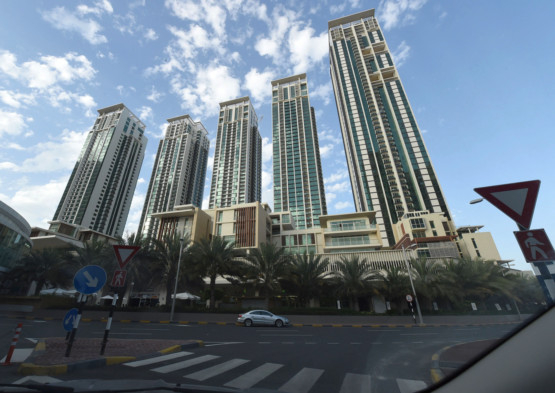
The Abu Dhabi government through the Department of Municipal Affairs and Transport introduced a law in 2006 to limit the increase in rent for existing tenants to 7 per cent annually, which was then revised in 2010 to 5 per cent. It was known thereafter as the “rental cap”. It was abolished in November 2013, as there was a steady supply of new units in the emirate. Before the end of last year, the rental cap was reintroduced, despite many reports saying that rental prices for both apartments and villas were declining and would probably continue the trend this year, seemingly contradicting the requirement of a rental cap.
Abu Dhabi Law No 20 of 2006 and its amendments titled “Law Concerning the Tenancy and Organisation of Landlord-Tenant Relation in the Emirate of Abu Dhabi”, governs rent increases. The term “rental cap”, although widely used, doesn’t have a formal definition in either federal law or dictionaries. However, in the Abu Dhabi context it means the maximum annual increase granted by law to landlords. The rental cap is limited to lease renewals only; vacant units and those moving to another unit must conform to the prevailing market prices.
Household size
As of 2015, Abu Dhabi City had an estimated residential supply of almost 245,000 units for its 1.72 million individuals. If we were to exclude 25 per cent of the population who live in labour camps, the capital city would have an average household size of 5.2 individuals. Compared to neighbouring Dubai’s average household of just four individuals, this suggests high levels of accommodation sharing. If we were to assume a similar household size to Dubai, an estimated shortage of more than 70,000 units for 2015 alone can be extrapolated. Given the more recent slowdown in new residential supply, and a population growth rate of 7.3 per cent, this number may double by next year.
ValuStrat analysed demographic data from the Statistics Centre of Abu Dhabi (Scad) and found that an estimated 54 per cent of the workforce, excluding construction labourers, earn below Dh120,000 per year. Based on accepted spending patterns, it could be assumed that their annual housing budget ranges from Dh24,000-Dh48,000. Those earning Dh60,000 per year, or Dh5,000 per month, will normally allocate 35-40 per cent of their salary to housing expenses, suggesting an accommodation budget of at most Dh24,000 per year. Other than resorting to illegal sharing, this amount might secure a studio on the city’s outskirts or in an old, poorly maintained building with reduced amenities and services. As the cost of living increases in an oil-dependent economy still recovering from a downturn, a rental cap seems a logical step.
The estimated incoming supply of only 13,000 residential units by 2019 reflects a slowdown in construction and handovers. The good news is that developers are trying to solve the supply “mismatch” that’s been going on for years and are now considering developing mid-tier properties.
Government’s plan
The rental cap is indicative that the government is taking necessary measures to support the majority of its residents. Abu Dhabi has yet to develop a residential index comparable to what’s in place in Dubai, which would permanently replace the rental cap to standardise annual rent increment and minimise disputes. The rental cap can be viewed as a temporary solution to reduce rental disputes and ensure fairness and sustainability of real estate growth.
Furthermore, the possibility of a huge residential undersupply in the short to medium term may result in upward price pressures. This has prompted the government to reinstate the rental cap as a pre-emptive measure to protect tenants.
The primary concern of landlords is to keep their units occupied. Consideration is also now being given to economic changes, redundancies, declines in tenant demand, reduced affordability (staying within government housing allowance budget) and possible downsizing. Accordingly, landlords are now electing to retain tenants by accepting reduced/static rental amounts or an increased number of cheques. There have also been a reduced number of enquiries for rentals over the last quarter of 2016 , thereby adding further pressure. Regarding rental contract renewals, reports have indicated that 70 per cent of tenancy renewals are either at the same rate or less, with the remaining 30 per cent showing a slight uptick, but still below the 5 per cent mark.”
One-bedroom apartment rentals on Al Reem Island are currently 10 per cent lower than last year and two-bedroom units in Al Raha Beach showed a 17 per cent decline in rent in the last six months last year. The rental declines witnessed by all asset classes might be attributable to older leases that were costly due to the absence of a rent cap, versus the price of new leases that are in line with the current supply and demand dynamics.
Our analysis indicates the recent reintroduction of the 5 per cent rental cap will prevent situations such as in 2014 when, without the rental cap, apartments and villas were priced 27-30 per cent higher than prevailing market prices. The rental cap has thereby provided some sense of well-being and security of tenure for tenants on the one hand but on the back of declining rentals also gives tenants the edge for negotiation when the rental contract is up for renewal.











